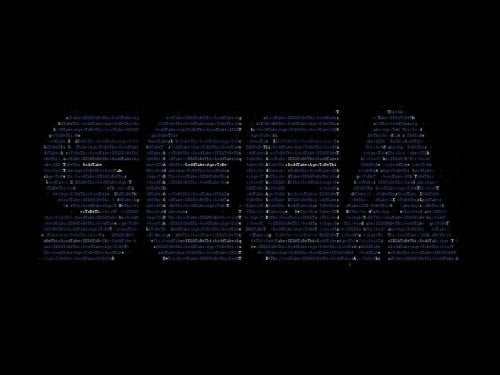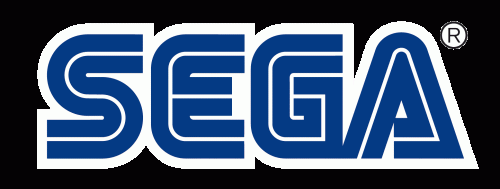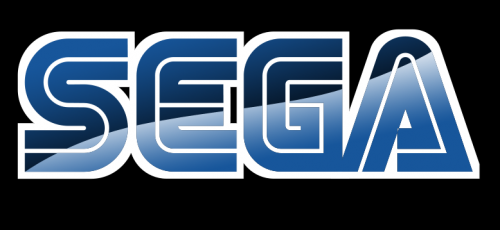Sega Logo — Sega Corporation is a Japanese developer of software and hardware in the field of entertainment ( video games ). One of the most respected video game brands in the world. SEGA has had a long history of successes in the market for arcades as in the console , but since the launch of Dreamcast , is outside the hardware market, for which only dedicated to game programming and production some peripheral machines from other companies. However, continues the development of hardware for gaming machines . SEGA’s headquarters are in Tokyo , Japan .
SEGA born in 1965 from the union of the companies: Rosen Enterprises and Service Games, Ltd. From the first, would take the name. This was dedicated to the sale of Jukebox for American military bases, while the second was an importer of art and other products founded in Japan by Dave Rosen in 1953 . Rosen led from 1956 by importing recreational games and went on to place 5,000 of them throughout Japan, but became increasingly disenchanted with the machines brought from America so I decided to make their own games merged with Service Games, SEGA Enterprises where it came from, Ltd.
Sega debuted Rifleman , a game mechanic that simulated gunfire in the far west, and 1967 games already exporting to the United States . The first success of the company was Periscope ( 1968 ), a submarine simulator, and his last game mechanic was Jet Rocket ( 1970 ). After that SEGA was devoted to electronic games and entertainment , producing 1967 to 1979 a total of 140 different games. In 1980 he bought SEGA Gremlin Industries , a manufacturer of gaming machines, and got into the world of home video games by licensing some of their games. At that time, Gulf + Western purchased the company but sold during the crisis of the game , an opportunity that took Rosen along with some Japanese investors to regain control.
During the years that SEGA had been under the control of Gulf & Western’s jumped the SG-1000 and SC-3000 , two systems born with the idea of competing for the domestic market but went unnoticed. It was not until 1984 that SEGA made a firm commitment with the Mark III to reach all households, but the popularity of the NES ended any hope. In 1986 SEGA reshuffled his Mark III and became what is known as the Sega Master System to enter the American and European markets. The result was uneven, although the U.S. could not stand up in Europe achieved great success going on to sell more than the machine Nintendo in several countries, although it was not enough. In 1988 SEGA decided to focus on innovation and launched the first 16-bit console market the Sega Megadrive , which turned to be a disaster in Japan. Crushed by the PC Engine of NEC Corporation in its jump east to the U.S. and Europe seemed doomed to failure, but at Christmas 1989 the Megadrive achieved spectacular sales deleting the PC Engine western market.
During the following years the Megadrive competed directly with the 16-bit Nintendo , the Super Nintendo , and was curious peripherals that were not as successful as MegaCD Sega or Sega 32X , managed to rise as the sales leader in Europe, although sales in the U.S. and Japan and both were lower than overall system Nintendo . Meanwhile SEGA had built a great reputation in the world of arcade games as famous as Out Run , Shinobi , Afterburner , Virtua Racing and Virtua Fighter whose conversions were transformed always huge hits. A SEGA and had only two things to do, get a pet to rival Mario and enter the handheld market. I first got it with Sonic , the blue hedgehog who became the company standard, and the latter thanks to the Game Gear , a powerful color console technically far superior to the Game Boy from Nintendo but fell into oblivion due to the short duration of their batteries.
As it did with the 16-bit SEGA was the first to move to 32 bits with Sega Saturn , and for the first time in Japan was rewarded with spectacular sales during its launch in 1994 . Unfortunately the rest of the world was somewhat cold reception and was quickly surpassed in sales for the PlayStation from Sony . The result was that in late 1997 console had almost disappeared, leaving only in Japan until 1999 thanks to games based on licenses from different sleeves.
After the disappointing history of Saturn SEGA was in a serious financial crisis, but still had time to make one last console before leaving this market. The Dreamcast was released in 1998, arriving in Europe and the U.S. in 1999 , 128-bit console was a bet double or nothing, but SEGA again lost the game. The users were attracted by the power of the new console and remained faithful to the PlayStation or decided to wait for the release of the new PlayStation 2 to set foot on the 128. SEGA finally stopped giving official support to the console in early 2001 , but continued to release games for it being the last Puyo Pop Fever in 2004 (currently still releasing some games for the console, if only sporadically).
Since the end of the Dreamcast Sega has gone through a very turbulent, with rumors of acquisition, internal restructuring and the move to be a Third-party . Also during the last decade of the twentieth century , the arcade market, where the company is number 1, has been decreasing. Today the outlook is uncertain and the company recently merged with Sammy, a Japanese manufacturer of pachinko and recreation to form Sega-Sammy Holdings.
SEGA today, has become a licensee very strong, because after years of rivalry with Nintendo , now work together on several projects, one of which was the arcade version of F-Zero, where Namco , SEGA and Nintendo worked together in their development, calling themselves TRIFORCE, and since then we can see games of Sonic and other Sega characters in both Nintendo consoles and Sony and Microsoft respectively.





